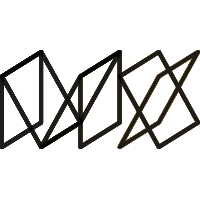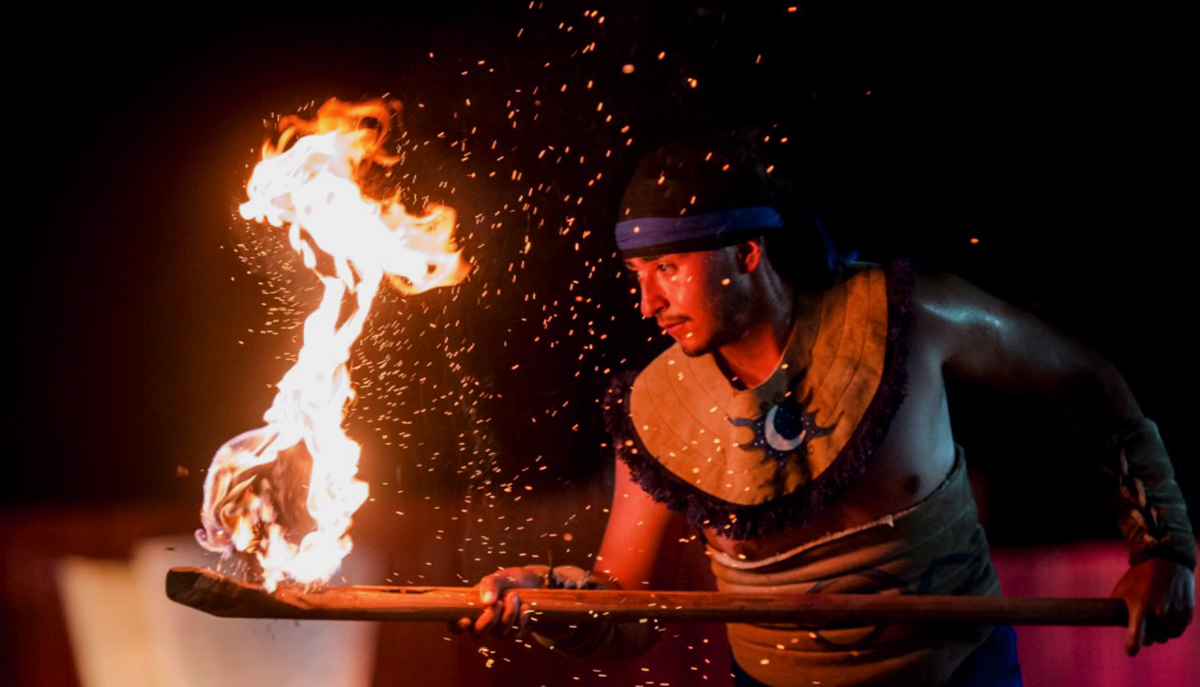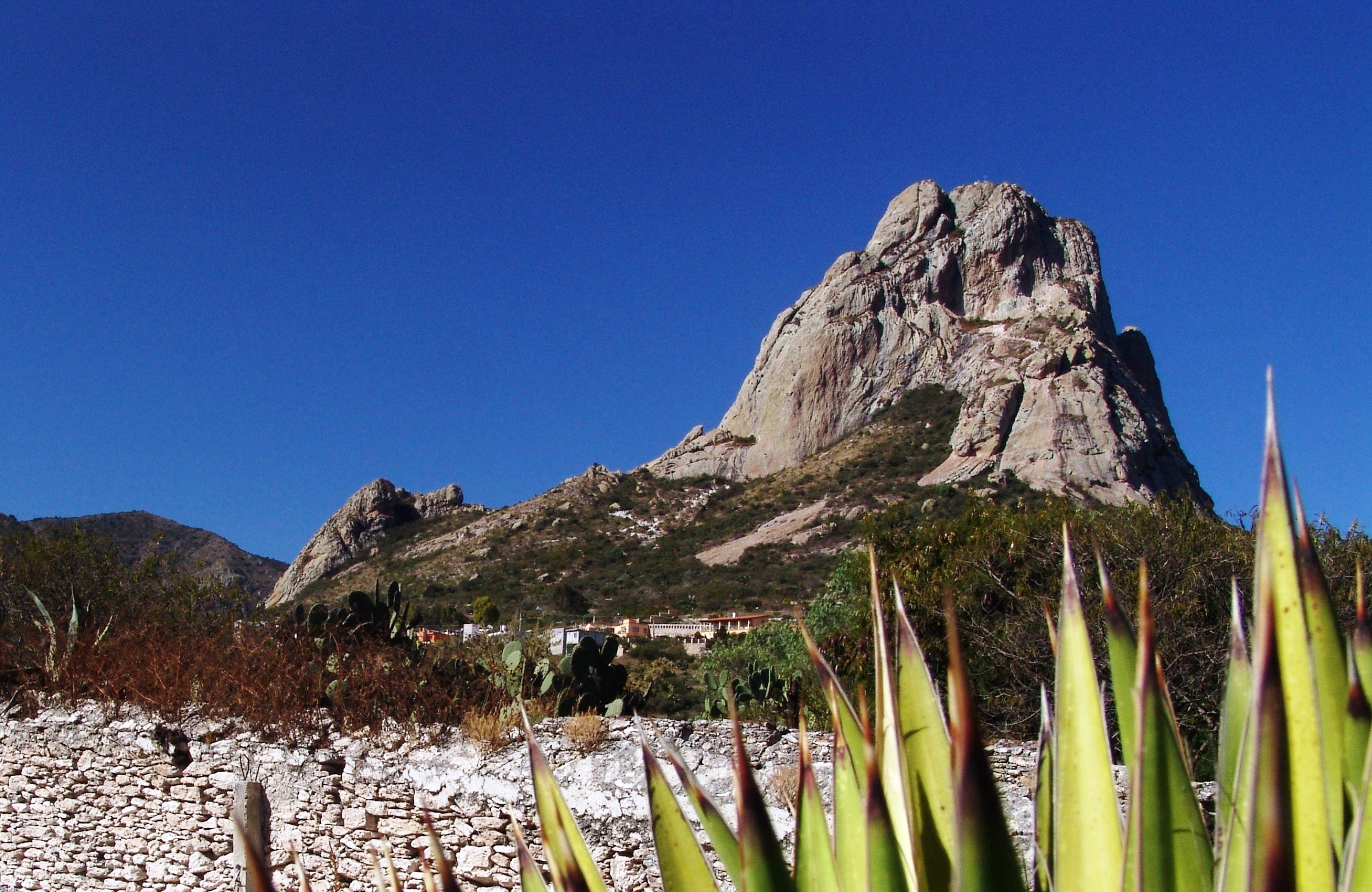Capital: Santiago de Querétaro
Área: 11,699 km2
18 municipios (2020)
Fundación: 23/12/1823
Habitantes: 2,368,467 (2020)
Hablantes de lenguas indígenas: 31,086 (2020)
QUERÉTARO
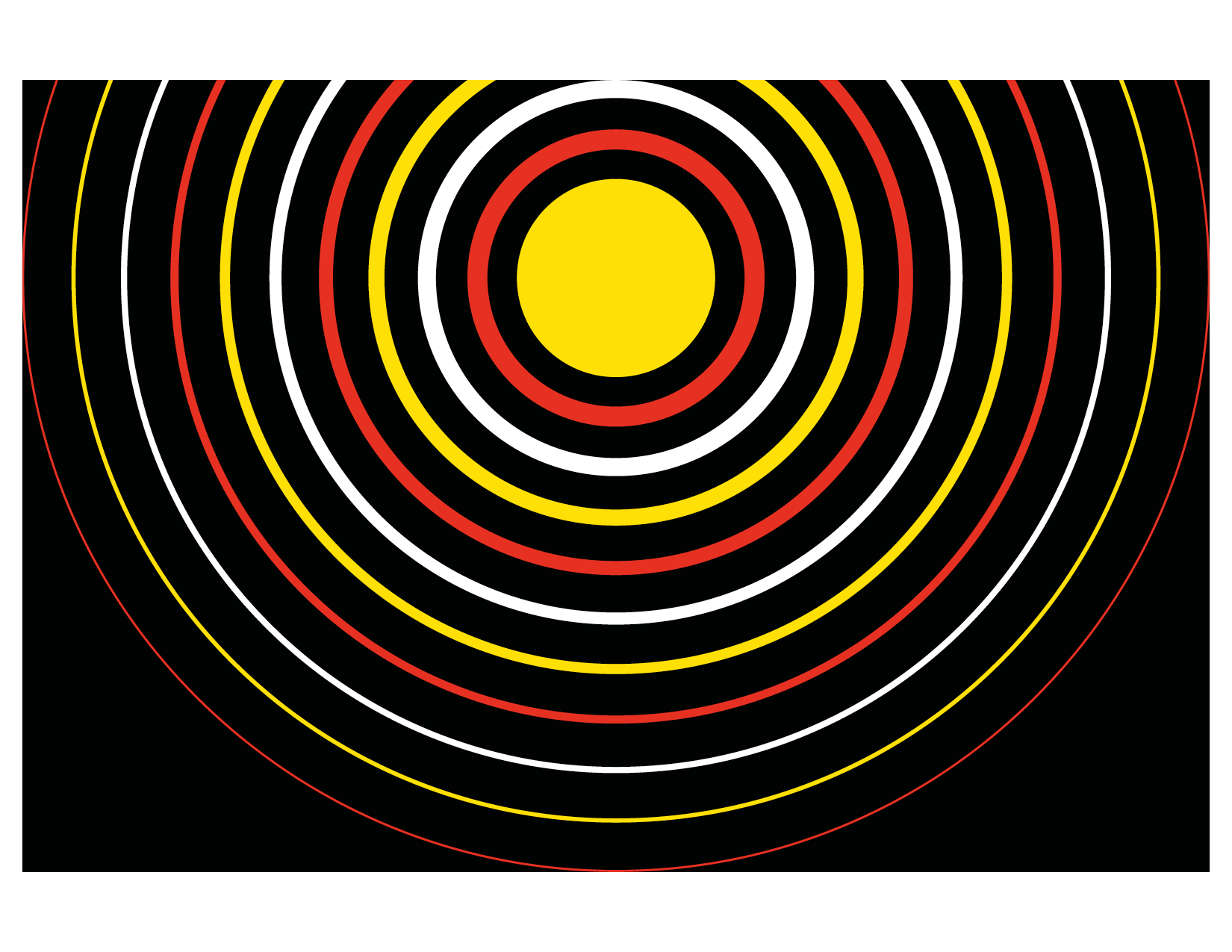
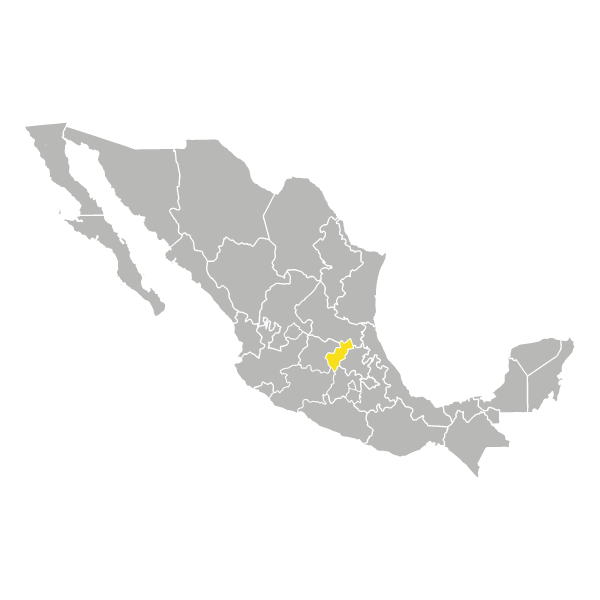
Según el Códice Mendocino, esta región se llamaba Tlachco, “tierra del juego de pelota” en náhuatl. Los chichimecas la llamaban Xico y los otomíes Nda Xie; ambos términos también pueden ser interpretados como juego de pelota. Pero hay dos palabras que son las más parecidas fonéticamente al nombre que hoy se usa: k’erendarhu, purépecha para decir “tierra de las grandes piedras” o “lugar del gran pueblo”; y queretha-ro, del tarasco que significa “tierra del juego de pelota”. El juego al que estas palabras se refieren es al de la tradición purépecha: de noche, los jugadores armados de bastones, se pasan entre ellos una pelota en llamas hecha de tela, para representar el movimiento del sol en el cielo. En la bandera, esto se ilustra con los círculos en rojo, amarillo y blanco sobre un fondo negro. Hay 18 circunferencias concéntricas, una por cada municipio del estado y en el centro, el círculo ilustra el sol y el pueblo al que los purépechas se referían. Incluso, también podríamos decir que el círculo representa el centro geográfico del país, localizado en la ciudad de Tequisquiapan.
Selon le Codex de Mendocino, cette région était appelée Tlachco “la terre du jeu de ballon” en Nahuatl. Les Chichimecs l’appelaient Xico et les Otomis Nda Xie, les deux mots peuvent aussi être traduits comme “jeu de ballon”. Mais il ya deux mots qui sont les plus proches phonétiquement du mot employé actuellement : Purepechan k’erendarhu, “terre des gros rochers” ou “terre du grand village” et queretha-ro est le mot Tarascan pour “terre du jeu de ballon”. Le jeu de ballon particulier auquel le nom se réfère est un jeu de la tradition Purepechane : la nuit, les joueurs utilisent un bâton pour se passer la balle faite de tissu et en feu, pour représenter le mouvement du Soleil autour du ciel. Ceci est illustré par les cercles en rouge, jaune et blanc, qui sont les couleurs du Soleil à différents moments au cours de la journée, sur un fond noir. Il y 18 cercles concentriques de différentes tailles, un par municipalité dans l’Etat et pour representer le mouvement du Soleil autour du ciel et de la balle pendant le jeu. Au centre, le cercle représente le Soleil et le grand village nommé par les Purepechas. Il peut aussi représenter l’actuelle géographie du centre de Mexico, localisé dans la ville de Tequisquiapan.
According to the Mendocino Codex, this region was called Tlachco, the “land of the ball game” in Nahuatl. Chichimecs named it Xico and the Otomis Nda Xie, both words can be translated as “ball game” too. But there are two words that are the closest sounding to the one currently in use: the Purepechan K’erendarhu, “land of the big boulders” or “land of the great village” and Queretha-Ro, Tarascan word for “land of the ball game”. The particular ball game the name refers to is the one in the Purepechan tradition: at night, players using sticks pass on each other a ball made of fabric and set on fire, to represent the movement of the sun across the sky. This is illustrated by the circles in red, yellow and white, the colours of the sun at different times during the day, set against the black background. There are 18 concentric circles in different sizes, one per municipality in the state and to represent the movement of the Sun across the sky and the ball during the game. At the centre, the circle represents the Sun and the great village named by the Purepechas. We could also argue that it represents the actual geographical centre of Mexico, located in the town of Tequisquiapan.
![]() Querétaro by Rediseño México is licensed under a Creative Commons Attribution-NonCommercial 4.0 International License.
Querétaro by Rediseño México is licensed under a Creative Commons Attribution-NonCommercial 4.0 International License.
